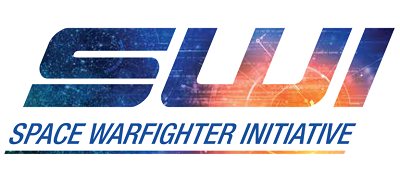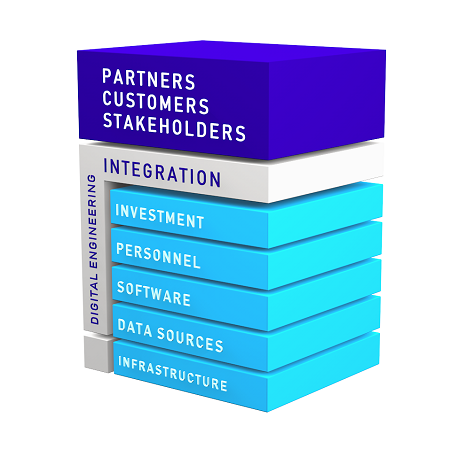As space continues to become a congested and contested environment, maintaining domain supremacy requires innovative, agile, and ambitious capabilities to outpace the threat. To anticipate and address these hard challenges, space warfighters must be able to develop strategies and simulate and analyze a myriad of real-world scenarios to develop policy, doctrine, systems, education, and training for space warfare. The many potential outcomes must factor in the capabilities and activities of the many industry players, civil and commercial space, international allies, and potential adversaries that compose a rapidly changing global space enterprise.

To ensure the nation’s space professionals are prepared for success, The Aerospace Corporation established the Space Warfighter Initiative (SWI) to support government customers by leveraging its decades of deep institutional technical expertise in developing a capability to analytically evaluate the tactical, operational, and strategic levels of warfighting.
“A key priority for Aerospace is supporting national security space to better understand warfighting across the domain, helping our customers to maintain a dominant force in the face of emerging threats from adversaries seeking to remove our military advantage,” said Jay Santee, Vice President of Strategic Space Operations at Aerospace. “The Space Warfighter Initiative will provide an ecosystem for space warfighters, engineers, scientists, and technologists working in custom-built and flexible facilities with tools, infrastructure, and software to enable the space warfighters to assess and develop options to proactively counter rapidly emerging threats.”
The SWI architecture emphasizes integration of infrastructure, data, software, and personnel supported by a digital engineering (DE) backbone. The SWI combines high-fidelity, physics-based threat modeling and conflict simulation presented through sophisticated user interfaces and common operating pictures that drive situational awareness and decisionmaking. The SWI focuses on creating a scalable, dynamic environment that allows for developing and evaluating space warfighting concepts, architectures, and protocols to inform operational approaches and tactics, techniques, and procedures (TTPs) development, as well as systems acquisitions and investments that advance resilient, agile, and relevant solutions.
Preparing for Space as a Warfighting Domain
“For decades, Aerospace has provided technical support to wargaming,” said Jean Michael, General Manager of Aerospace’s Space Enterprise and Warfighting Division. “The SWI was created to pivot Aerospace and the government toward the threat to ensure viability of our most valuable space assets and to create an environment where CONOPs, concepts, and capabilities can be evaluated in terms of operations and the integrated space enterprise.”

Effective wargaming has long been essential for military organizations to educate and train officers in tactical, operational, and strategic decisionmaking, while also providing valuable lessons learned for anticipating trends in future conflicts. Space as a warfighting domain is still a relatively new concept and as such, does not yet have the extensive infrastructure needed for these exercises.
“The SWI is a new platform for Aerospace. As it continues to develop, we will provide a unique capability to the space community,” said Dr. George (Rick) Vazquez, SWI Principal and Space Analytics and Wargaming Director. “Being an FFRDC, Aerospace is independent, objective, and free from organizational conflicts of interest, and that allows us to support the government and work with industry, civil agencies, and international allies to integrate potential systems and contributing capabilities into a single warfighting environment. This environment—coupled with Aerospace’s breadth and depth of technical expertise, high-fidelity physics modeling and simulation, engineering, and insight into the threat—creates a powerful and engaging wargaming and analysis platform.”
Digital Transformation for Space Operations
An essential element of adapting for the modern era of space requires advancing the digital transformation of concepts, systems, and operations that integrate across the enterprise.
“Conducting wargames for the space domain, given the complexities of operating in space and its physics-based nature, will require extensive modeling and simulation, which drive the need to have a digital engineering backbone to support it,” said Dean Bucher, Associate Principal Director of Aerospace’s Computer Applications and Assurance Subdivision.
To that end, the SWI architecture leans on digital engineering principles to capture the logic flow within wargame events and dynamically produce game states as the event is played. The digital data produced during these activities are analyzed to capture wargame execution performance.
“I come from an air combat background, and we had a mantra, which was to train as you fight and fight as you train,” said Rob Stevens, Director of Aerospace's Model-Based Systems Engineering Office. “In order for that to work, you need to give a realistic training environment so that you can fight the real war just like you trained for it. For SWI, a good goal for us is to provide environments as realistic as possible for space warfighters to best prepare them.”
Theory Into Practice
In September 2020, Aerospace successfully integrated all the functional layers of the SWI’s vision to execute a tactical command and control (C2) wargame using the SWI architecture and networked simulated operations centers across Aerospace campuses. The event demonstrated that Aerospace could accomplish its own internal wargame from tooth to tail, capturing meaningful C2 results. Going forward, Aerospace will explore the possibilities of expanding the scope of the exercises and potentially experimenting with customers on new ideas.

As the trusted partner for the preeminent space enterprise, Aerospace is uniquely positioned to understand and engage with a spectrum of customers and contractors across the government, civil, and commercial space segments. This holistic perspective enables Aerospace to guide the integration across disciplines and domains to support mission lifecycle activities.
Building on Aerospace’s decades of space experience and world-class expertise, the SWI will provide high-quality physics-based research, analysis, education, and wargaming to support our nation’s shift to space warfighting.

